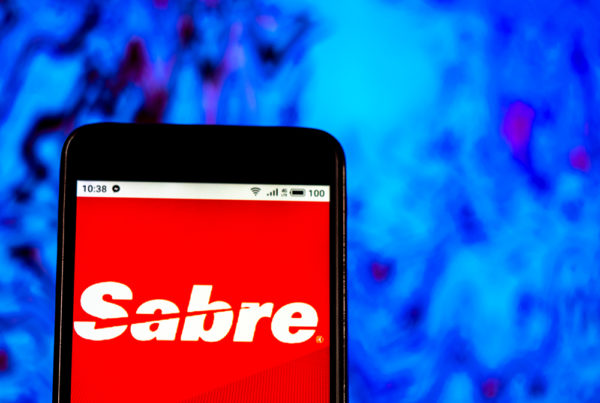Selling high is easy these days but buying low… not so much.
The headline in The Wall Street Journal earlier this week said it all: The Median S&P Stock Has Never Been More Expensive. The accompanying article noted that the valuation of the median stock in the large-cap index as measured by forward price to earnings is now “in the 100th percentile of historical levels,” which puts it at “the highest level possible.”
So, is that all there is? Game over? Nothing left to buy? As ESPN “College GameDay” host Lee Corso is fond of saying, “Not so fast, my friend!”
We sent contributor Adam Fischbaum on a quest to identify any remnants of value, and he didn’t disappoint. Adam’s report follows.
— Bob Bogda, Editor
P.S. Like what you see? Don’t like what you see? Let me know.

As equity markets make record highs in the face of double-digit unemployment, economic uncertainty, and a contentious Presidential election, it’s hard not to just throw caution to the wind, join the party and buy high hoping they’ll go higher. But before I pull the trigger, the voice of reason – the better angel — speaks up in my head.
Strangely enough, that voice sounds a lot like Warren Buffett. So, as an investor, I take pause, step back and look around. I vividly recall the mania of the Tech Bubble at the turn of the century when one client, chomping at the bit to scoop up a new issue the moment it opened, instructed me to buy the stock, “…regardless of the price.”
Good times.
Today, as stocks climb yet higher and with cash paying nothing and bonds paying next to nothing, investors need a place to go – someplace where the stocks are cheap, usually the result of being punished by the market or ignored by it. Sometimes this “strategy” pays off and other times it leads to what is often referred to as a value trap.
A value trap is a stock or other investment that seems inexpensive because the metrics seem cheap – price to earnings, price to book, dividend yield, and the like. However, all too often there’s a reason a stock is “cheap” – namely, because it deserves to be.
To avoid stepping into these kinds of traps, I draw on one of my favorite Buffettisms: “Better to buy a wonderful company at a fair price than a fair company at a wonderful price.” So, with the recent, seemingly irrational run up, here are three stocks that are looking interesting to me:
CVS Health Corp (CVS) – This $83 billion leviathan comes up on my radar a lot. By combining retail distribution (over 9,000 locations), pharmacy benefits administration and health insurance, CVS is what the future of consumer-facing American healthcare will look like. And the stock is stupid cheap.
One metric that can sometimes get overlooked is the price-to-sales ratio. While the case is usually made for the price-to-earnings (bottom line) number to be the main driver, price to sales is also a great measure of whether a stock is undervalued.
CVS shares currently trade at 0.3 price to sales. In dollars and cents, this translates into paying only 30 cents for every dollar of revenue the company generates. That’s a 70% discount. Throw in $7.9 billion in annual free cash flow, a steady customer base (sick people) and there’s little argument that this stock should be a core holding. CVS shares currently hover around $63.50 with a 3.13% dividend yield.
SPONSORSHIP
 5 Stocks to make up the PERFECT 2020 gold portfolio
5 Stocks to make up the PERFECT 2020 gold portfolio
This report is a primer to today’s evolving gold investment environment. Not only does it cover some of the basics like how to hedge your wealth safely with gold… but it also breaks down industry trends sector by sector… and pinpoints several high-quality growth stocks along the way.
Genuine Parts Company (GPC) – Better known for its NAPA auto parts brand, GPC is one of the largest players in the aftermarket auto parts space among the likes of AutoZone (AZO), O’Reilly’s (ORLY), and Advance Auto Parts (AAP). The company has a long history of disciplined management and healthy balance sheets.
Common stockholders have been paid a cash dividend every year since the company went public in 1948 and that dividend has been raised for 64 consecutive years. That more than qualifies the company for membership in the exclusive S&P 500 Dividend Aristocrats club, all of whose 65 current members have raised their annual dividends for at least 25 consecutive years.
With $17.6 billion in annual sales, GPC trades at a 20% discount of just 0.8 times sales. Shares are currently priced around $94.50 with a consistently growing dividend yield of 3.39%.
Walmart, Inc. (WMT) – It’s hard to look at the retail behemoth as a rising e-commerce behemoth as it is often overshadowed by Amazon (AMZN). And while WMT’s online business does, indeed, trail Bezos and company, its heft and glidepath to growth are a force to be reckoned with.
And if you believe in this story, you can buy in very cheaply. How cheap? Try a 30% discount.
WMT shares trade at just 0.7 times annual sales, which come to just over $534 billion. Over half a trillion dollars in sales. At a discount.
Amazon, by contrast, trades at 5.0 times annual sales of $321.8 billion. This means that, currently, the market is willing to pay $5 for every $1 in AMZN sales. Buying WMT shares instead of AMZN means getting 66% more sales for cents on the dollar.
If you doubt that WMT can catch up to AMZN in terms of online retail market share, do so at your own risk. The numbers, infrastructure and smarts are in WMT’s favor. The stock trades at about $131 with a 1.64% dividend yield.
When EVERYTHING looks pricey, it pays to roll up the old sleeves and look under the hood a little closer. The price-to-sales metric can sometimes reveal just how fair the price of a wonderful stock is. There’s another voice in my head that sounds suspiciously like Forrest Gump. “Ya nevah know what you gonna git.”
SPONSORSHIP
Master Crypto Course Now Available
The coronavirus knocked the wind out of stocks.
Investment legend Teeka Tiwari has nailed numerous crypto recommendations over the past few years.
Now, he has decided to give away his comprehensive 14-part crypto training course to anyone who wants to claim it.
You can read more about this opportunity for free.









